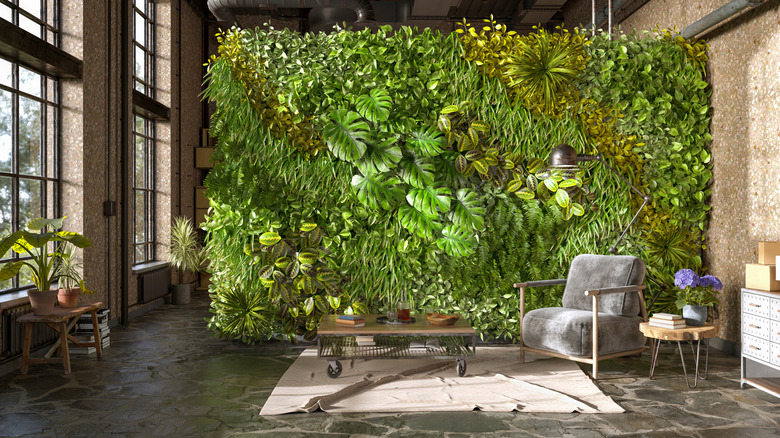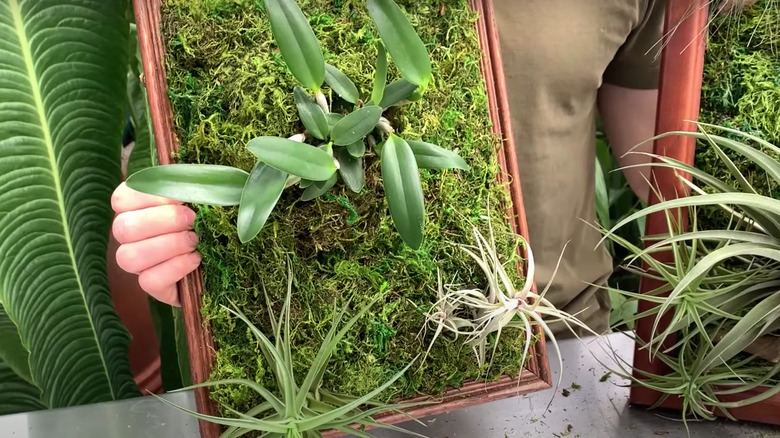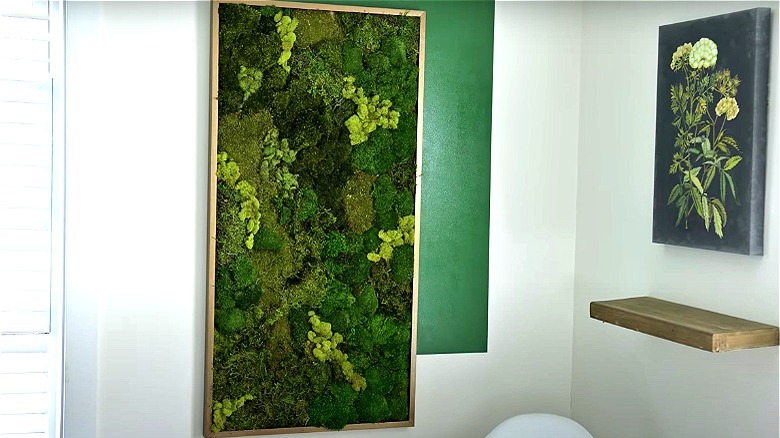Living Walls: What They Are And How To Pull Them Off In Your Home
While plants are always a great decorative element to add to your home, they can sometimes be a bit lackluster. Placing a few small, potted plants on your windowsill will add a touch of greenery, but it won't bring the wow factor you may be craving. Perhaps you want to include a natural element to the interior of your home that makes a statement and draws the eye in.
If so, the perfect solution may be a living wall — also sometimes called a green wall or just simply a plant wall. Typically used in commercial spaces like hotel lobbies, offices, and courtyards, living walls are covered in many plants. This differs from vines trailing up a building (sometimes known as a facade), as the vines are established in the ground, while living walls have plants that grow out from the vertical surface. While this may seem difficult to comprehend at first, it's actually completely possible and, as you can imagine, creates quite a jaw-dropping impression. Alternatively, you could opt for what is known as living artwork, which is a similar concept that doesn't cover the entire surface of the wall.
Using real plants
True living walls are covered in real plants, which provide the room with clean air and a lively appearance. However, they can be quite expensive to install and maintain — if you purchased one from a professional, it would usually cost between $110 and $175 per square foot. This price includes the component that the plants grow inside, the mounting materials, the plants themselves, irrigation and artificial lighting considerations, the shipping, and the installation. Then, once it's all set up, you'll also need to pay for maintenance, including replacing plants, pruning, and feeding, which will cost about $1.50 to $3 per square foot each year.
If you wanted to try your hand at making a living art piece yourself, you may want to use air plants, as these don't grow in soil and only need a light misting about once a week to thrive. To do this, staple a steel frame into a picture frame or a large border against a wall. Once done, position the plants on the surface and cover the roots with moss, which you could attach with an adhesive spray. Make sure your piece is positioned in an area that gets plenty of sunlight as well.
Low maintenance versions
There are a lot of complications when it comes to creating a living wall. Maintaining it can be difficult, as it can be challenging to water the plants without an expensive irrigation system, and you're almost guaranteed to have some casualties, as they probably won't all survive. You're also pretty limited on the types of species you can use, as many of them are difficult to establish vertically along a wall.
If you're looking for an easier solution, you could use faux plants, which can be purchased on Amazon. While this may be more expensive than real types upfront, it could easily save you money in the long run, as you won't have to pay for replacement plants or maintenance products. Another option is to use preserved moss, which was once alive and has been preserved to retain its look and vibrant color. This material can be purchased at most craft stores or on Amazon as well.


